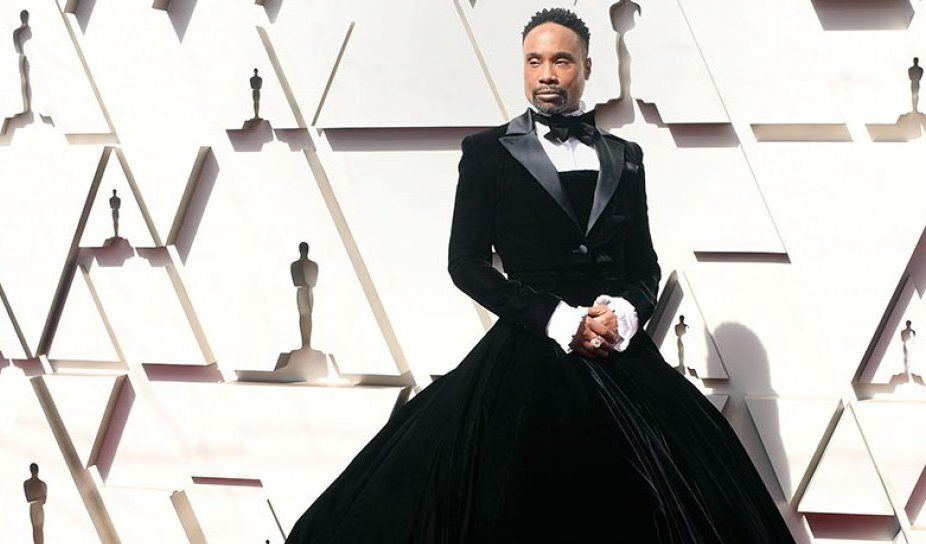Jaerin Kim
2019 is indeed a year for gender-fluid fashion. Although this so-called ‘no-gender’ fashion trend had always existed – Chanel’s bob haircut in the 20s, Yves Saint Laurent’s trouser suits in the 70s, to name a few – there is something different in the air this year. Along with a growing recognition of the LGBTQ community and acceptance of gender-fluid fashion both in fast and high-end fashion[1][2], gender fluidity is steadily making its way into this year’s fashion trends. The definite example of 2019’s status quo on the gender-inclusive trend would be the 2019 Met Gala[3], with this year’s theme being ‘camp.’ Originating from Susan Sontag’s 1964 article “Notes on ‘Camp’ ” where she defined camp as an aesthetic sensibility where something is intentionally “too much”, the theme itself seemed to invite gender-fluid fashion. Camp – as something over-the-top, extravagant, non-conventional – is almost a synonym for breaking down gender norms. Consequently, the 2019 Met Gala turned out to be the most discussed gala in recent years. Jared Leto brought an exact copy of his head; Lady Gaga changed her dress two times, in front of hundreds of cameras; Kim Kardashian was, well, being Kim Kardashian.
Among the various costumes worn by numerous celebrities, Billy Porter was definitely one of the stars who captured the public’s attention. Dressed as a winged, Egyptian pharaoh with heavy makeup on an extravagant couch carried by six taut men, his costume was an epitome of what it means to be unrestricted by gender roles. In fact, the Met Gala was not the first time that he broke the gendered norms of fashion by his statement costume. He was already well known for making bold appearances before Met Gala – him wearing a Christian Siriano tuxedo gown in 2019 Oscars is a perfect example. For Porter, his fashion is a way of promoting feminine men, who are often overlooked compared to masculine women. “Any woman who puts on pants is considered strong because pants are associated with the patriarchy – it’s like sort of a superiority complex. So a man puts on a dress, and it’s disgusting,” says Porter in an interview[4]. “So what you’re saying is ‘men are fabulous, women are disgusting.’ I’m not doing that anymore.”
Porter’s argument indeed has a point. Men enjoying feminine clothing is hugely undermined compared to women with masculine ones. For women, suits are often considered as pieces of armor[5], a sign of strength; for men, wearing dresses is an abnormality. This is not just about men’s rights, but more about the rights of women since the misrepresentation of feminine men is tied to the vilification of feminine characteristics and of women in general.
However, as much as accepting femininity is significant, the whole discussion on non-binary fashion has to answer to the most fundamental question when it comes to gender itself. What is being feminine and masculine? Who defines what masculinity and femininity are? Without going back to the classic example of the works of Margaret Mead[6] and Simone de Beauvoir[7], the gender roles of today are indeed socially constructed ideals. No one is born either as a man or woman in a social sense; instead, everyone is made to act in a “masculine” or “feminine” way. In other words, labeling who is supposedly “he” and who is supposedly “she” is meaningless. Rather, all this terminology – feminine men, masculine women – reinforces the idea that gender norms actually do exist since they are based on the most stereotypical gender roles. This is very far from the very notion of gender fluidity, which is an idea that everyone should be free to identify themselves with what they want to, regardless of their given ones. Wearing makeup and dresses should not necessarily represent femininity; wearing a suit and a tie should not be a synonym of masculinity. No one should be limited by their socially given gender roles and defining masculinity and femininity is the farthest thing that you can get from gender fluidity.
This discussion on fashion without gender borders could be stretched to the logic of gender roles in the LGBTQ community, where the notion of gender fluidity is particularly prominent as well. Even in the LGBTQ community, stereotyping people based on their looks and social gender norms still exists. Lesbians label those who are masculine as butch and those of feminine features as femme[8]– A huge majority of gay men portrayed in the media are feminine, leaving out those who are not, not to mention that these labels hugely affect the way people present themselves, particularly through fashion. Even though these labels are adopted voluntarily, the fact that they are based on gender stereotypes is crystal clear. This is yet another reminder that deconstructing gender conventions still has a long way to go, not only in the area of fashion but also in real life.
At the end of the day, fashion should not be about labeling what’s feminine or masculine and simply ‘allowing’ people to access what is considered to be the exclusive property of the gender binary. Rather, fashion should be free – as Susan Sontag, the master of Camp herself, once described literature as a passport to the larger life, “the ultimate freedom.”[9] If literature and fashion have something in common, that would be the endless possibility of expressing oneself through the lens of arts. Fashion is freedom. Let people wear whatever they want.
[1]https://www.ifaparis.com/media/news/2019/gender-fluidity-fashion-new-trend
[2]https://commetric.com/2019/08/26/gender-neutral-fashion-a-millennial-whim-or-a-trend-to-stay/
[3]https://www.vanityfair.com/style/photos/2019/05/met-gala-camp-on-theme
[4]https://www.pinknews.co.uk/2019/07/12/billy-porter-pose-man-dress-political-act/
[5]https://www.lifestyleasia.com/sg/style/fashion/women-in-suits/
[6]https://www.loc.gov/exhibits/mead/field-sepik.html
[7]https://philosophynow.org/issues/69/Becoming_A_Woman_Simone_de_Beauvoir_on_Female_Embodiment
[8]Cooter, Joey F., “Butch, Femme, or Neither? What Owning These Identities Means” (2014). Electronic Theses and Dissertations. Paper 2365. https://dc.etsu.edu/etd/2365
[9]https://www.friedenspreis-des-deutschen-buchhandels.de/sixcms/media.php/1290/2003%20Acceptance%20Speech%20Susan%20Sontag.pdf
Other posts that may interest you:
- Carbon dioxide removal – hit or miss?
- Local Victories for Turkish Opposition — A Sign of Hope?
- Are France and Japan a Mismatch Made in Heaven?
- A Reflection on Dark Tourism
- Cadavre Exquis : Goodbye stranger
Discover more from The Sundial Press
Subscribe to get the latest posts sent to your email.





